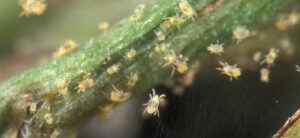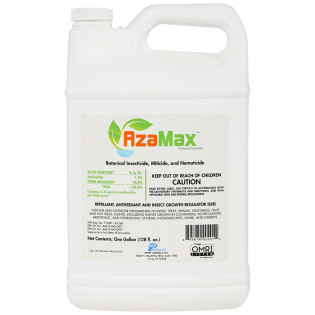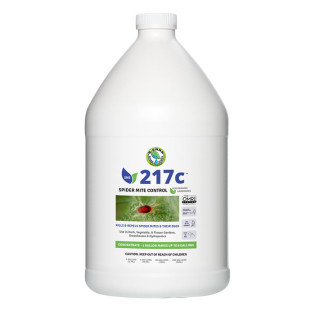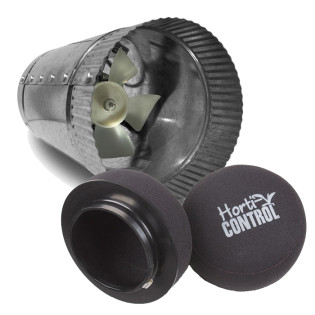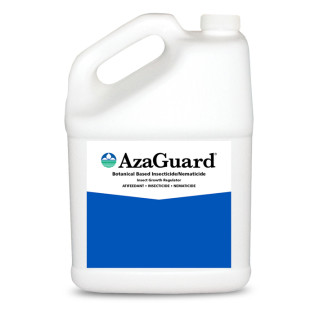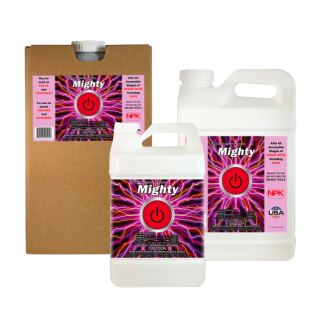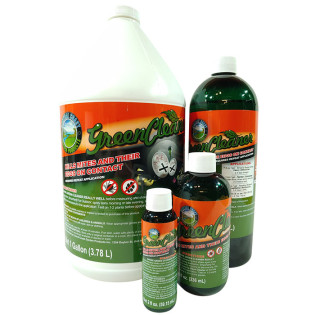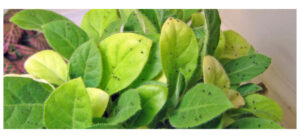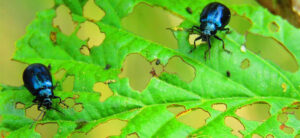
One of the smallest indoor gardening pests, spider mites can also be one of the most devastating to your plants.
There are also a variety of spider mite species within the mite family. The rate at which these bugs reproduce is incredibly fast.
Female spider mites can lay about 14,000 spider mite eggs during their life cycle. This means an infestation could grow to over 1 million spider mites in 4 weeks!
This is why following a grow checklist, and checking your plants thoroughly on a consistent basis is so important.
What causes spider mites to infest plants?
These pests are even more common when growing in soil outdoors. They can be the result of tainted soil, or in some cases, were on your plants from the start.
This is why buying clones and seeds from the most reputable sources is very important.
Indoors, spider mites can be caused from messy gardening conditions and less than perfect environment controls. They can also be brought in on your clothing, pets, supplies, and even through the air.
Before getting into better preventative treatment, we’ll discuss what kind of spider mite damage can be caused.
What do spider mites do to plants?
Spider mites attack your plants by biting into the leaves and penetrating plant cells. They will then suck out the contents such as chlorophyll. This leads to an array of problems.
Plants use their leaves to release and absorb moisture. When spider mites bite leaves, plants respond by closing their stomata. Leaves lose a ton of moisture through these bites. From there, dehydration of the plant will continue to worsen.
An infestation will also lower a plant's ability to undergo photosynthesis. The foliage will start dying and dropping off, before the plants die altogether.
Let’s talk about how we can prevent this from occurring in the first place.

Preventing spider mites from infesting your plants
A properly sealed ventilation system with proper environmental controls is the first step in preventing spider mites.
Step one is not bringing spider mites into your garden yourself. Below are some tips to help prevent these situations.
Quarantine new plants
Did you recently buy clones, or were you gifted some graphs from a friend?
You should first set these plants up in a separate room or grow tent, to protect your existing garden.
You can help speed this up by spraying new plants with clean water with a spray bottle. Watch closely for early signs of spider mites. Once you are certain they are clean, you can introduce them into the same space as your mature plants.
Keep your growing space clean
A messy growing space is a welcome mat for pests and diseases. Take steps to clean your grow room often. Remove dead plant matter or spills on the floor, and remove any trash promptly.
At the end of each growing cycle, disinfect your entire growing space. This will allow you to start with a clean slate next time you plant.
If you are growing outdoors there is little you can do to prevent spider mites. Keeping an eye on the surrounding area can help before spider mites reach your plants.
When you do preventative spraying outdoors, consider spraying surrounding plants. This will keep a nice, clean radius and help prevent the chance that your plants will be a target.
Seal your ventilation system with a HEPA filter
If you are growing indoors, you need to make sure you are constantly exchanging air within the room or tent.
This will keep humidity and temperature levels in the ideal range, which is critical to plant health and pest prevention.
Spider mites can get inside your growing space through the air, particularly through your ducting.
If you vent air from a grow room outside, this can be an easy entry point for these pests.
The best way to combat this is with a HEPA intake filter. These filters are rated incredibly high in particulate filtration.
If you want to learn more about grow room environment and ventilation requirements, check out this full guide.
Preventative spraying for spider mites
A more active approach to prevention is spraying clean, cold water on your plant’s foliage. Get the bottom of the infested leaves. This is a common breeding place for spider mites.
Spraying early in the morning is best for your plants. Lowering the pH to around 4 will knock off mites and deter them from coming back.
A frustrating aspect of growing is that you can do everything right, and still run into pests and diseases. Don’t worry though, we will show you how to identify spider mites and remove them.
Early Signs of Spider Mites & How To Identify An a Spider Mite Infestation
Part of what makes controlling spider mites so difficult is how hard to detect they are. They are very small, and sometimes can only be seen with a microscope.

Another challenge is that there are three main species of spider mites. All three look and act differently. We will explain all three species, but there are easier ways to identify spider mites.
Instead of looking for the insects themselves, first look for signs of their existence.
Spider mites produce webbing on your foliage. By the time you notice this you will already be dealing with a full blown infestation.
You can also examine the leaves themselves. Look for signs of tiny white, yellow, or orange dots. These are evidence of spider mite damage to your foliage.
Once you are aware a mite problem may exist, you need to narrow down which species you are dealing with.
What are the different types of spider mites?
The first step to get rid of spider mites is to determine which family has taken over your grow.
There are three main types of spider mites found in gardens:
Twospotted Spider Mites, Or Red Spider Mites
The most common spider mite family you will come across are Twospotted spider mites, otherwise known as red spider mites. These bugs most often infest ornamental and vegetable crops.
Adult females are around 0.4mm long, while males are slightly smaller. They can be recognized by their distinct webbing, which is where they lay perfectly round spider mite eggs.
Twospotted spider mites thrive in hot, dry conditions that often occur in the grow room. They can double in size overnight, and usually infest indoor plants by being brought in by growers on accident.
They feed on the plant by biting into plant cells, feeding on the contents inside. This will result in leaves showing white specs, eventually turning yellow.
If these mites are not wiped out before flowering, they can work themselves into buds. This will cause issues after harvest while the buds dry, and mites look for food.
Broad Mites
Another common indoor gardening foe, the broad mite is much smaller than its Twospotted cousin. You will not be able to see them without at least a 20x magnifying glass.
Adult females are half the size of Twospotted at around 0.2mm long. Due to their small size, the best way to identify them is their eggs.
Broad spider mite eggs are perfectly oval shaped, unlike those of the Twospotted mite.
Broad mites are extremely hard to detect until permanent damage has occurred to the infested leaves. The broad mite has toxic saliva, which causes twisted, hardened, and distorted growth to leaves.
These guys are usually found on new leaves and flowers, as these are freshest. They will stunt growth and kill off bud sites.
Hemp Russet Mites
Russet mites, specifically the hemp russet mite, are one of the hardest bugs to get rid of on a plant. They are difficult to control and cause tons of damage in a short period. These are generally found on hemp plants.
Warm, dry, windless conditions promote rapid growth, and they target these conditions which provide humidity and shelter.
Russet mites are hard to detect and reproduce rapidly. They can take down a garden before you even have the chance to identify them.
Russet mites lay clear, round eggs in the spring. Adults are tiny and wedge shaped, and appear yellow when in a group together. The easiest way to identify these guys is with a microscope. These spider mites only have two sets of legs unlike other members of the mite family.
Russet mites start their work at the bottom of the plant and work upwards as the population grows. Signs of their presence include yellowing and curling of leaves.
This can sometimes be mistaken as a nutrient deficiency, leading to growers exploring this route. By the time they realize nutrients are not the issue, it is too late.
Look for reduced vigor and overall health of your plants. Early detection of any pest or disease is key to regaining control.
Spider Mite Treatment - How To Get Rid Of Spider Mites

There are a number of ways to combat spider mites once you have identified them. These methods range from chemical control to beneficial insects!
The best plan of attack will depend on a few things. How serious your infestation is, whether you want to remain organic, your personal beliefs on pesticides, and more.
What is the best treatment for spider mites?
Miticides are a very effective spider mite treatment, but choosing the right one and using it correctly is tricky. With some general guidelines, these will be your best weapon against spider mites.
We recommend using contact sprays instead of systemic sprays. This is because contact sprays stay on the foliage surface, whereas systemic sprays enter the living tissue of plants.
Contact Miticide Sprays
Contact sprays need to come in direct contact with the target pest. Apply liberally, completely covering larvae and eggs. You will need multiple applications over a few weeks.
Try using multiple products every few days to prevent the spider mites from gaining a resistance to a certain pesticide.
Products that contain pyrethrum, horticultural oils, and neem oil are all strong contact sprays. Never apply oil based products when your grow lights are on or when it’s hot.
The best time to spray your plants with oil based pesticides is right as lights are about to turn off. Shutting off your lights prior to when you normally do gives you more time to spray.
Systemic Miticide Sprays
Systemic products should never be used for consumable plants.
These chemicals will live within the plant, and when you consume your harvest, you will be consuming these sprays.
Our year end review of the best insecticides can help you choose the right one for your mite outbreak.
Using Predatory Insects To Fight Spider Mites
A common pest control practice is fighting fire with fire - or other insects. If you want to avoid chemicals you can use a number of beneficial bugs as a spider mite treatment.
While it may sound crazy to release additional bugs or mites into your garden, there is a science behind this.
Ladybugs are a useful, human-friendly tool for spider mite treatment. Ladybugs will eat away at mites on your plants and will stay on your plants until the food is gone.
Phytoseiulus Persimilis is another predatory mite. Their diets consist solely of other spider mites. They will eat so fast they end up starving and dying once they consume all the problem mites.
When using predatory mites, be careful about spraying your plants with pesticides. These two methods can be used together, but timing is important.
Spray your plants up until you introduce predatory insects. Once you apply them, stop spraying. You don’t want to harm your beneficial insects.
How to apply miticides in the garden
Here are some of the products we recommend for fighting spider mites, with their suggested application rates.
- General Hydroponics AzaMax: Low end: 2 tsp / gallon, Mid end: 2 Tbsp / gallon, High end: 4 Tbsp / gallon
- General Hydroponics Exile: 5 Tbsp / gallon
- *do not mix sulfur or use within 3 days of spraying/burning sulfur
- General Hydroponics Prevasyn: 1 - 2 tsp / 1 Gallon
- Pyganic Gardening 1.4%:1-2 oz / gallon
- Pyganic Specialty 5%: .25-.5 oz / gallon
- Mighty Wash: Ready to Use, DO NOT DILUTE
- Green Cleaner: 0.5 - 2 oz / 1 Gallon
- SNS217 : Ready to Use, DO NOT DILUTE
- Fox Farm Force of Nature :1.5 oz / gallon
Final Thoughts On How To Kill Spider Mites
Following these steps will help you be able to prevent, identify, and remove spider mites should the time come. These are just one of many common indoor gardening pests.
Check out our full guide on common grow room pests and diseases.
If you want help battling spider mites, and are unsure which course of action you should take, you are not alone. Our expert growing staff is available at 888-815-9763.





